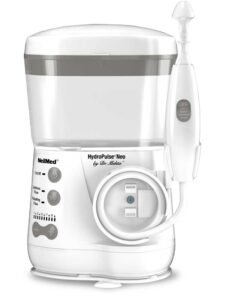The Snoring Cure to Lose Weight
What is an Ear Nose and throat specialist doing writing about losing weight?
The simple fact is that you CAN’T lose weight when you are snoring badly. That is because, without a good night’s sleep, in AM you are tired. Need to get the kids to school, get to work; so you take extra cookies.
A snorer might be told to lose weight. With less fatty tissue in the throat, there is less snoring. and better sleep. But because she is snoring, there is the AM fatigue and the need for energy via cookies. The fact is, that most snorers can’t lose weight because of the fatigue of a poor night’s sleep. Worse, as the weight increases, the snoring gets worse.
Remember how you do exercises to thin the fat from your tummy? Here are exercises that do the same thing. The fancy name is oropharyngeal exercises, described by Geraldo Lorenzi-Filho, MD, PhD in June 2015 issue of Chest Magazine.
And while snoring may seem like more of an annoyance than a health problem, that is simply not true. Snoring has been linked to medical conditions, including heart attack, stroke and glaucoma.
SIT-UPS FOR YOUR THROAT
If your bed partner has complained of your snoring or you have unexplained daytime sleepiness, consider trying the following exercises.
About half of my patients improve enough after doing these exercises (think of them as “throat sit-ups”) for five minutes three times a day for six weeks to avoid surgery or other inconvenient therapies. such as wearing a mouth guard or using CPAP. They also awaken feeling more refreshed and reduce their odds of developing OSA which stands for Obstructive Sleep Apnea.
Just as important, your partner may be losing sleep because of your snoring. This is NOT a joke: this is why your partner can’t keep their weight where they want it to be.
Here are the main exercises included in the recent study mentioned above (along with some slight variations that I have found to be effective for my patients.) The tongue positions for these exercises strengthen your tongue muscle and the sides of your throat. However, my variations give these muscles a more rigorous strength-training workout.
- Tongue Push. What to do: Push the tip of your tongue forcefully behind your upper front teeth and move it all the way back along the roof of your mouth (palate) 20 times. My variation: Say the vowel sounds “A, E, I, O, U” while doing the exercise.
- Flat Tongue Press. What to do: Suck your tongue up against the roof of your mouth, pressing the entire tongue against your palate 20 times. My variation: Repeat “A, E, I, O, U” while doing the exercise.
- Say “Ahhh.” What to do: Focus on raising the back of the roof of the mouth and uvula (the fleshy appendage in the throat that’s responsible for the rattling sound made by snorers) 20 times. My variation: Say the vowel “A” (or “Ahhh”) while doing the exercise.
Tongue Pressed against the back of the upper teeth. Here you push the tongue hard against the upper teeth. Repeat the vowels as loud as you can.
Speed Your Healing
Colds, allergies and sinus infections can cause nasal congestion and/or postnasal drip—two common conditions that can make your throat swell, increasing your risk for snoring.
Use of the Hydro Pulse for Snoring
Throat Irrigator: In some patients the tonsils are large. In one surgical procedure for snoring they remove the enlarged tonsils. Most of my patients use the Throat Attachment for the Hydro Pulse to pulse the tonsil and sides of the throat. The pulsing action removes bacteria and matter from the “holes” of the tonsils, and the pulsing acts like a massage to shrink and strengthen throat muscles.
Nasal/Sinus Irrigator: When the nasal portion of the Hydro Pulse is used, the pulsing action removes phlegm and biofilm. The pulsing action is at a rate designed to restore good cilia function. Then the cilia can do their job of moving bacteria out of the nose and sinuses, so you end up with a clear nasal airway.
- Nose taping. With age, the tip of one’s nose naturally begins to droop some. This can obstruct the nasal valve, which impedes breathing and contributes to snoring.
Try this simple test: Use your finger to press the tip of your nose up. If breathing feels easier when you do this, try taping your nose up before bedtime. What to do: Cut a three-inch strip of one-half-inch medical grade tape. Place it under the nose at the center, without blocking the airway. Gently lift the nose as you run the tape up the midline of the nose to the area between the eyes. The taping should be comfortable and is for use during sleep. Important: Commercial nasal strips, such as Breathe Right, spread the sides of the nose apart. Taping up the nose, as described above, also does this, with the additional advantage of opening the nasal valve.
Do the exercises: Like any form of exercise, these may take time and need to be done consistently. But be assured, doing these, especially in the early stages of snoring, can make a huge difference. When you get good sleep because your airway is clear, you have more pep, energy and can obtain your best weight. You can avoid getting to the more serious Obstructive Sleep Apnea.
You can also avoid the current therapies of serious throat surgery, wearing a dental device that moves your tongue forward, or using CPAP which forces air through the nasal/throat blockage.

